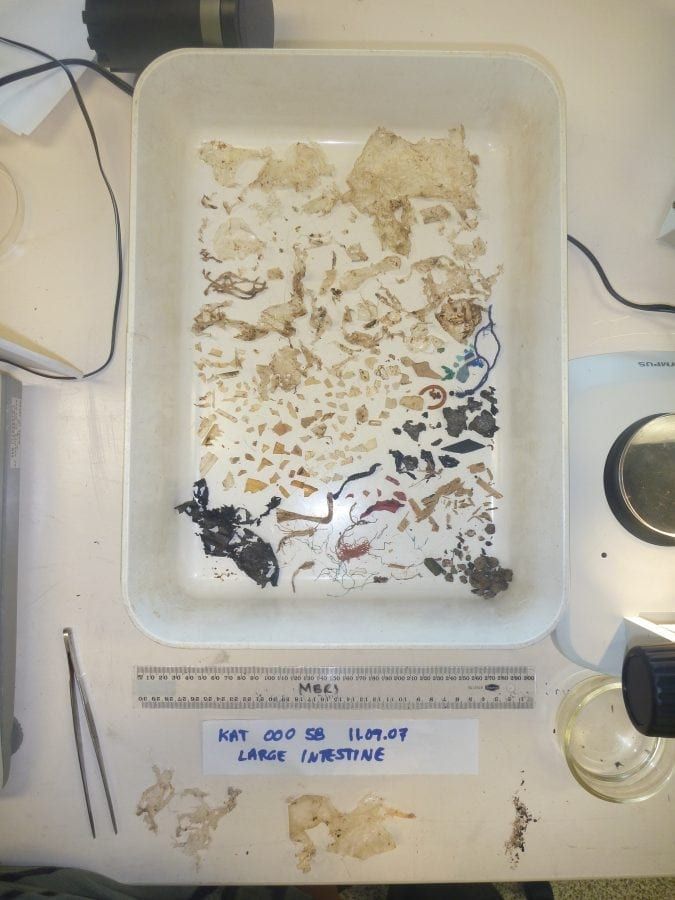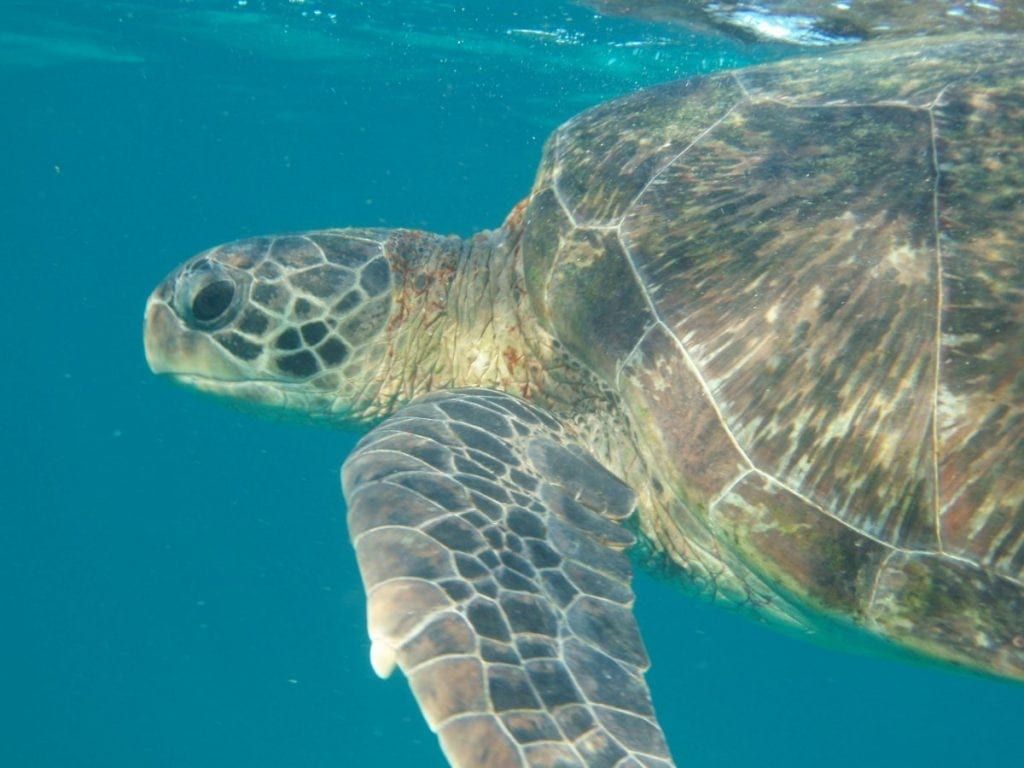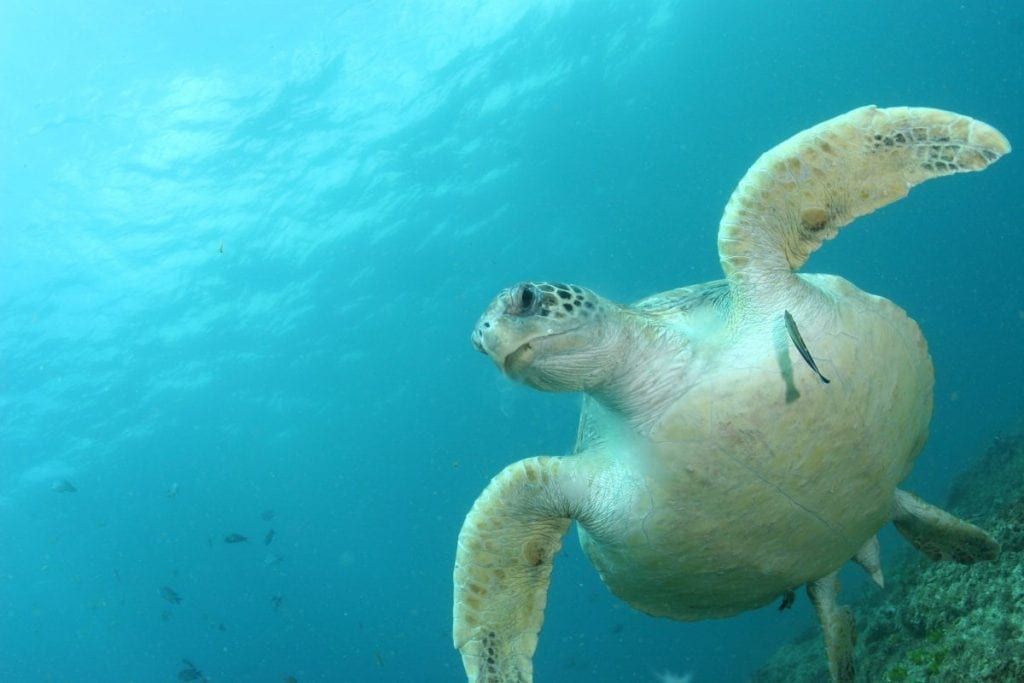Baby turtles are almost four times as likely to die from eating plastic than adults, warns new research.
They drift with currents due to their weaker bodies and feed in offshore waters closer to the surface which are more likely to be contaminated with large plastic items that can accumulate in their digestive tracts, or cause perforation.
Post mortems on almost 1,000 dead turtles found more than half of babies – and about a quarter of juveniles – had swallowed plastic, compared to just one in seven adults.
The count and mass of plastic ingested ranged from one to 329 pieces and weighed up to 10.41g (0.4 ounces).
There was a 50 per cent probability of death once the animal had just 14 pieces of plastic in its gut.
The first study of its kind sheds fresh light on the risk plastic pollution poses to the world’s declining sea turtle populations, especially in coastal surface waters.
They mistake rubbish dumped in the ocean for food. This can range from six pack rings from from canned drinks to packaging straps and balloon and kite strings to discarded fishing gear.

Corresponding author Dr Denise Hardesty, of the Commonwealth Scientific and Industrial Research Organisation, in Hobart, Tasmania, said: “The accumulation and persistence of plastic debris in the marine environment is of increasing concern.
“An estimated 4.8 to 12.7 million metric tonnes of plastic debris entered the world’s oceans from land-based sources in 2010 alone, with this input likely to increase exponentially into the future.
“This poses a considerable threat to marine life, primarily through entanglement and ingestion.
“While entanglement can have devastating effects, particularly those when it involves fishing gear, ingestion of manmade debris is also of increasing global concern.”
Her team examined data from 952 autopsies on sea turtle washed up on the coast of Queensland since 1992 and confirmed fears plastic was disproportionately affecting younger generations – especially babies.
Species included loggerheads, green turtles, leatherbacks, hawksbills, Kemp’s ridleys Olive ridleys and flatbacks.
They found 54 per cent of post hatchlings and 23 per cent of juveniles had eaten plastic – compared to 16 percent of adults.
The amount of plastic in the turtles’ digestive tracts also varied depending on their cause of death.
Those had died from unknown causes, which acted as a statistical control group, had consumed the smallest amounts followed by those that had been hit by boats or had drowned.
Crucially, those confirmed to have died from plastic ingestion had eaten the most – underlining its threat to sea turtles and other marine life.
Dr Hardesty said: “Animals dying of known causes unrelated to plastic ingestion had less plastic in their gut than those that died of either indeterminate causes or due to plastic ingestion directly – such as gut impaction and perforation.
“We found a 50% probability of mortality once an animal had 14 pieces of plastic in its gut.”
She added: “Our results provide the critical link between recent estimates of plastic ingestion and the population effects of this environmental threat.”

The findings, published in Scientific Reports , show feeding location and life history stage may impact the turtles’ risk of dying.
Dr Hardesty explained: “Younger turtles tend to drift with currents and feed in offshore waters closer to the surface, which are more likely to be contaminated with large plastic items that can accumulate in the animals’ digestive tracts, or cause perforation.”
The researchers found the best way of modelling the relationship between the amounts of plastic a turtle ingested and its risk of death took into account the number of items in relation to the length of its shell and its age.
Dr Hardesty said sea turtles were among the first animals recorded to consume plastic debris, a phenomenon that “occurs in every region of the world and in all 7 marine turtle species”.
She said: “Globally, it is estimated that approximately 52% of all sea turtles have ingested plastic debris.
“Plastic in the marine environment is a growing environmental issue. Sea turtles are at significant risk of ingesting plastic debris at all stages of their lifecycle with potentially lethal consequences.”
The study has implications for all marine life from seabirds and fish to mammals and a range of invertebrates, including corals.
Dr Hardesty said: “Nearly 700 species are now known to interact with manmade debris and as more species are investigated, the number continues to rise.”

“The model has broad applicability and can be adapted for other taxa to understand dose responses to plastic ingestion for other marine taxa of interest.”
Last year University of Exeter researchers found over 1,000 sea turtles are killed every year from plastic waste in the oceans and on beaches. The worldwide study said this figure is “almost certainly a gross underestimate.”
Watch Video Here

